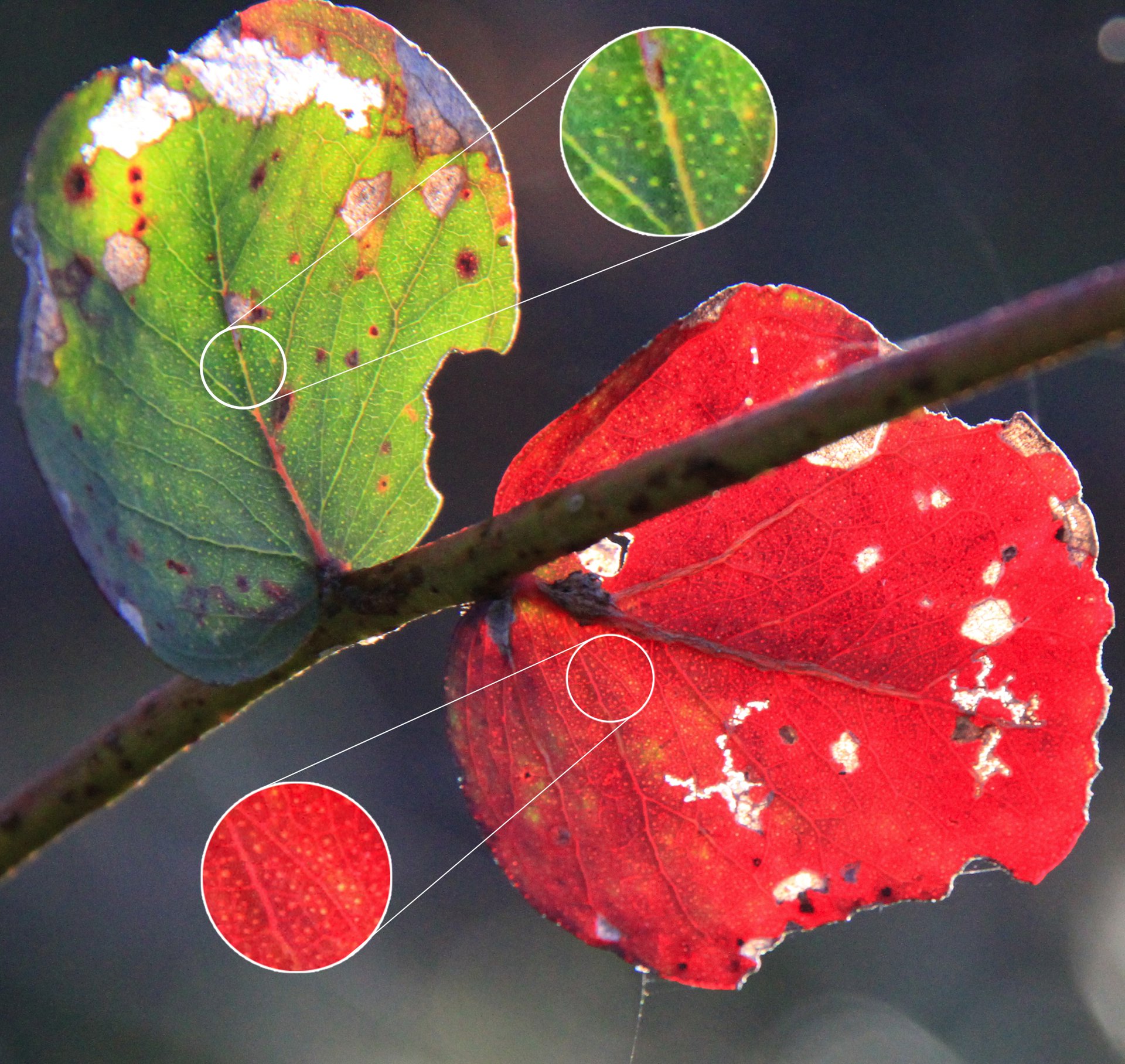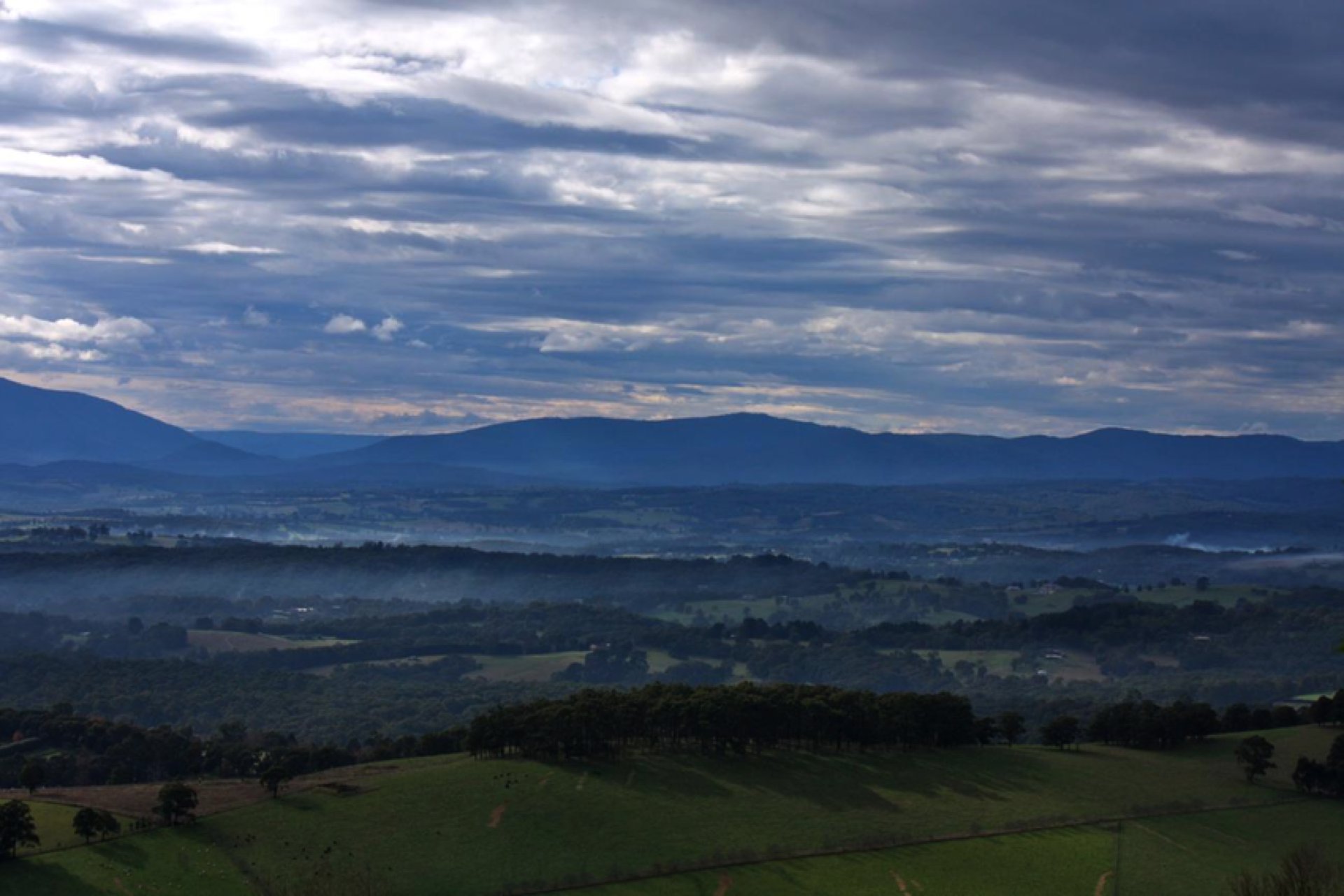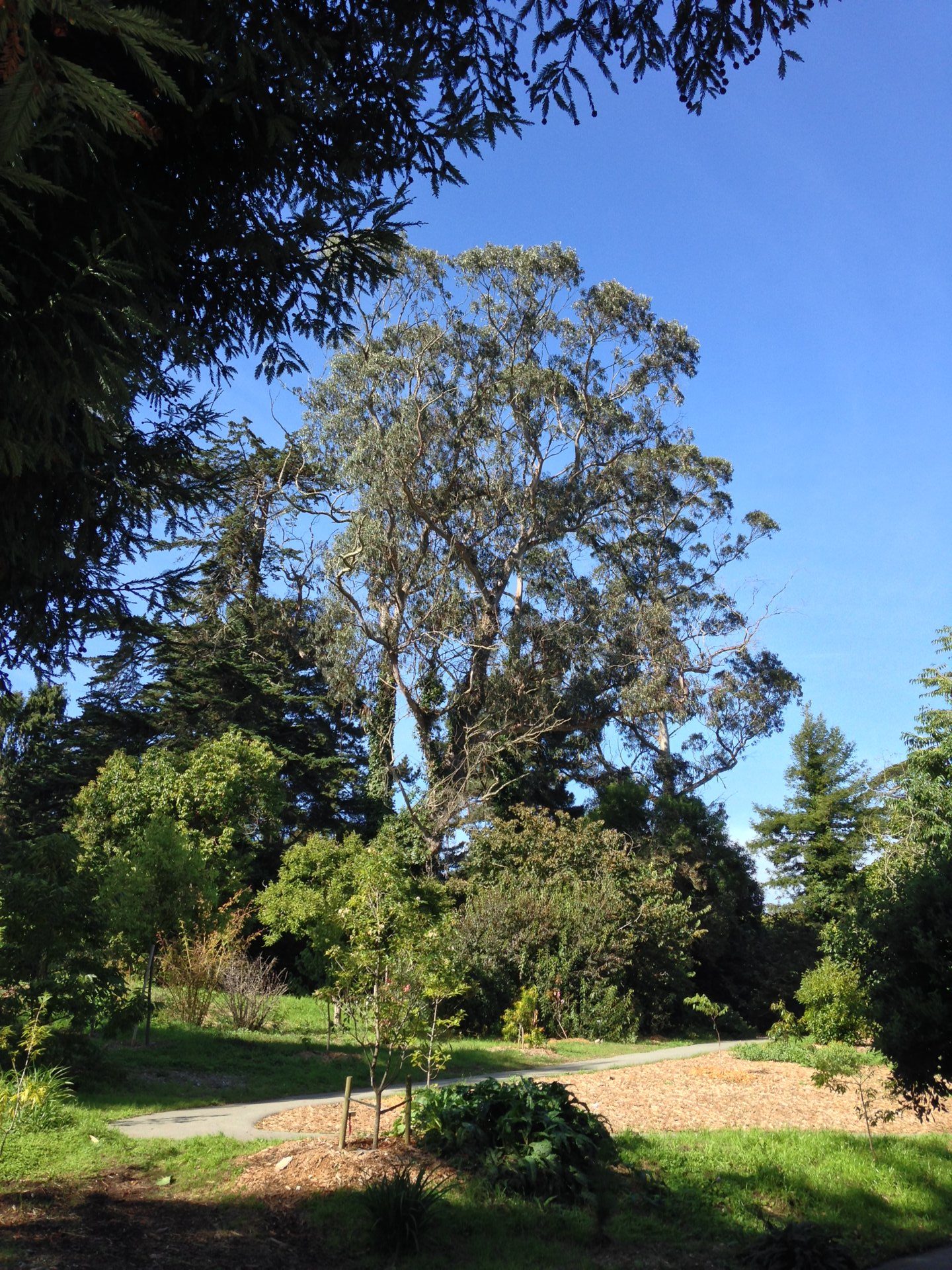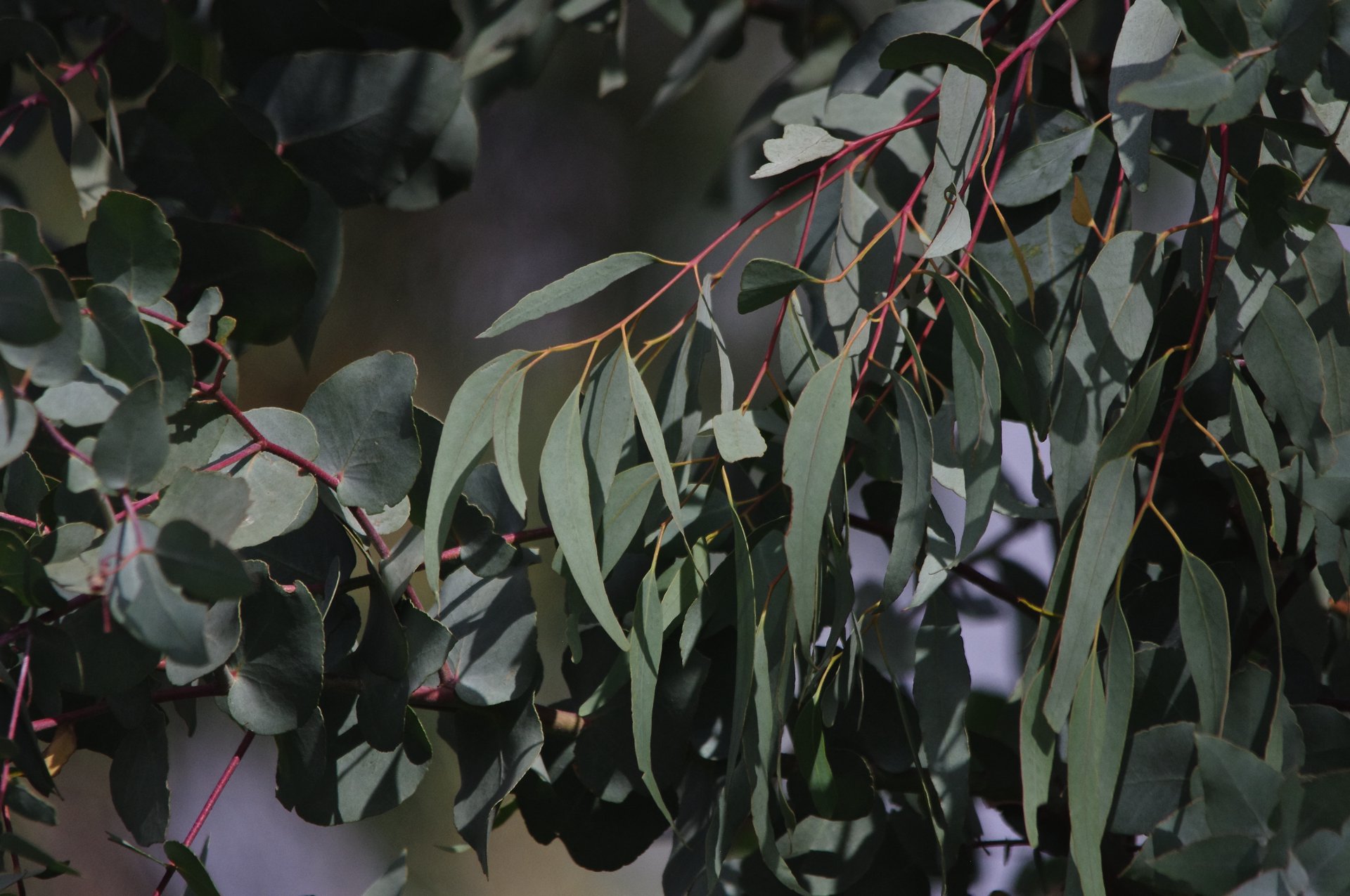The next time you are near a eucalypt, I want you to do one thing.
Breathe in.
Deeply.
You’ll be able to immediately notice it. That sharp, sweet scent of the eucalypt leaf. A mix of menthol and honey. Take some leaves in your hand, crinkle them. The scent will become more powerful, before it recedes like a wave washing back down the beach. But like the dull roar of the ocean, it will remain in the background – as it has for thousands of years on this continent we call Australia.
This characteristic eucalypt smell comes from ‘biogenic volatile organic compounds’. A suitably scientific term, they include chemicals like isoprene and cineole (which was originally called ‘eucalyptol’) that are found in a variety of trees globally. But eucalypts are world leaders – they possess these chemicals in proportions far higher than other trees. So much so that if you hold a eucalypt leaf to the light, you’ll be able to see tiny pinpricks of white – the glands which hold the compounds. When these compounds waft from the leaves on a hot summer day, they are the culprit behind that characteristic blue haze you see over forested ranges in Australia – they give the Blue Mountains the blues.

Some eucalypts are renowned for their scent. The Narrow-leaved Peppermint (Eucalyptus radiata) has a distinctive peppermint tang and is a major ingredient in the famous eucalyptus oil products. On a hot day or after rain, there is the unforgettable citrus scent of the widely-planted Lemon-scented Gum (Corymbia citriodora). These aromas can add a new dimension to lesser-known species – for myself and a co-worker, we are convinced that the juvenile leaves of the Red Stringybark (Eucalyptus macrorhyncha) have an unmistakable strawberry sweetness.
And so, eucalypts don’t just define our landscape; they define our atmosphere. And for me, the scents of those biogenic volatile organic compounds sequestered in eucalypt leaves have underscored some significant moments in my life.

It first began in a lab at The University of Melbourne when I commenced my forestry studies. The key performance indicator of any decent forester is to be able to tell the difference between a Blue Gum and a Red Gum, so on the lab bench in front of us lay a selection of eucalypt leaves, buds and fruits – all unlabelled. The challenge for us was to tell our supervisor which specimen was what species, and why we thought so.
I was not the greatest botanist in first year and even for seasoned professionals eucalypt identification can be tough, so this was a struggle for me. As I inspected the leaves of one sample, an involuntary action took over – I took one, scrunched it up, and breathed in. Maybe I was just tired of the regular chemical smells of the lab and wanted something different.
Our supervisor wandered over. Rather than chastising me for ruining a sample, he commended me. ‘It’s the sense we often neglect when trying to identify a plant,’ he said. ‘Smell. And it can help you identify a eucalypt, though not easily.’ I was struck with a momentary delusion of grandeur – imagine if I could identify every eucalypt by smell alone, like some hybrid between the characters of Patrick Süskind’s Perfume and Murray Bail’s Eucalyptus? I got back to the task at hand, this time noting the smell of each specimen in addition to the shape of the buds, the position of the valves, the form of the leaf. Despite abandoning my plans to be an olfactory master of eucalypts (turns out my sense of smell isn’t that great), in subsequent years of field work I always made an effort to give every new eucalypt I encountered a good sniff.
But the scent of eucalypts can provide much more than merely a shortcut to identification. Years ago, I was on the west coast of the United States, travelling through the giant Redwood and Douglas Fir forests of the Pacific Northwest, seeing trees bigger and older than I’d ever seen before.
One afternoon I was feeling particularly homesick, so I did what any forester does for comfort – I went to an arboretum. Specifically, the Strybing Arboretum in the San Francisco Botanical Gardens. I wandered through the Californian natives, the John Muir Nature Trail, and, of course, the Redwood Grove. The plants were great, but it did nothing to mend that deep sense of longing – missing my family, my friends, and all that is familiar and comforting.
As the day wore on and the late afternoon began to cast its sombre light on the botanical specimens, I decided to take a seat to enjoy my last view of an arboretum I would probably not see again for many years, if at all. As I did, I felt my homesickness vanish almost instantly. Even though I was alone now, I suddenly felt reassured that it would not be long before I’d be back home and that distance never truly disconnects any of us. What had suddenly cured me of my homesickness? I leant back in the seat and looked above me.

The unmistakably long, lanceolate leaves and smooth, cream bark of a Blue Gum (Eucalyptus globulus) greeted me, its messy canopy obscuring the early evening sky. Unwittingly, I had chosen a seat perched right in front of an expat eucalypt. I breathed in – deeply – and I could smell home. The Blue Gum’s aura of biogenic volatile organic compounds helped me remember that for an Australian, home is never far away – at least as long as a eucalypt is nearby.
So, on this National Eucalypt Day, wherever you are, find your nearest eucalypt, grab some of their leaves, and breathe in – deeply.
It’s a scent that will stay with you forever.
Banner image courtesy of Cathy Cavallo.


Leave a Reply